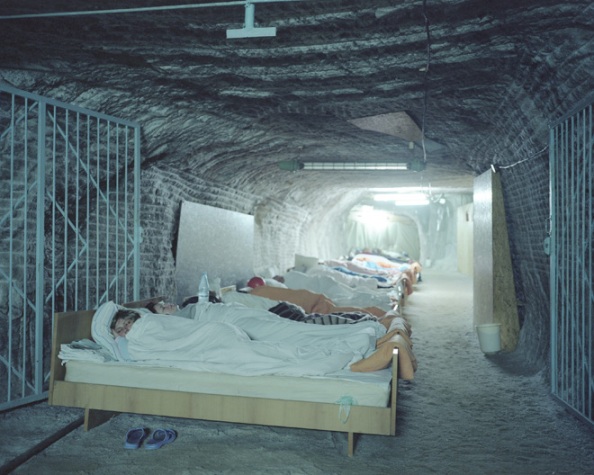
Image: Kirill Kuletski
Deep below the surface of the former Soviet republic of Ukraine, the starkly lit tunnels of a salt mine wind their way through a crust of underground mineral deposits. The air in these seemingly interminable subterranean passageways is replete with the salt particles once mined by workers. One might think the air in such a place would be harsh on the lungs of those miners — fresh air commonly being considered the preserve of outdoor spaces — but not so. For Ukraine’s repurposed Solotvyno salt mine in fact has remarkable curative properties…The main ward right next to the old railway tracks
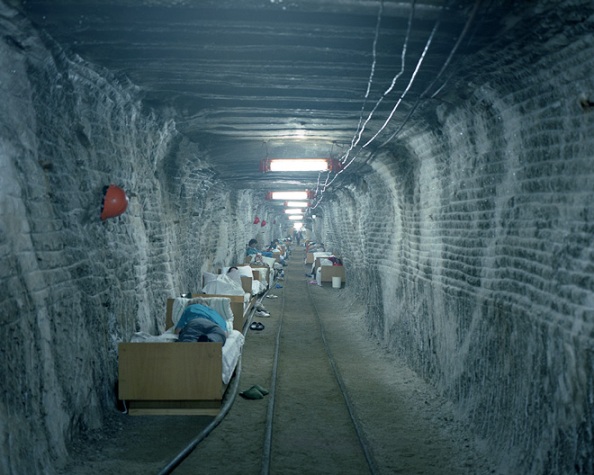
Image: Kirill Kuletski
For allergy sufferers like this author, what we’re about to report might not be new, but for those not suffering from aggravated sinuses or a weak respiratory system, this may be a shock — there is a drug-free way to alleviate (if not cure) such problems. The answer is salt. The healing power of salty air was discovered in Poland in the 1840s when doctors noticed that salt miners rarely had tuberculosis or respiratory ailments. They researched further and soon one of the first spas opened, based on these observations. The field of speleo or salt therapy developed out of these findings, including exposure to the air in salt mines and ingesting saline solutions through nebulizers or saline sprays. The biggest advantage of salt is also its biggest disadvantage: it is cheap. With the advent of the pharmaceutical industry, synthetically produced, bottled products, sold at high prices, have been promoted in the place of natural remedies and therapies.Only artificial lights 300m underground
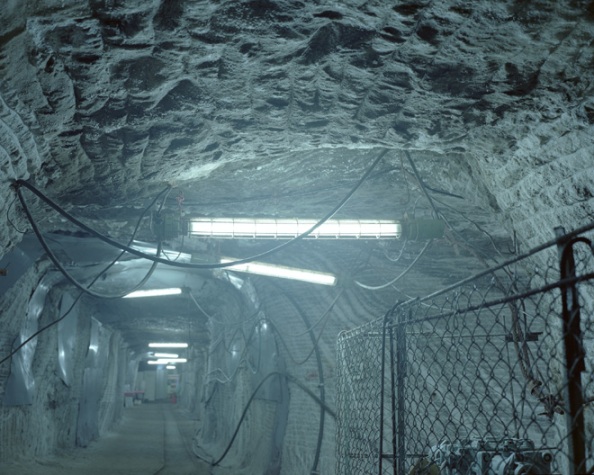
Image: Kirill Kuletski
For many decades, salt therapy was restricted to Central and Eastern Europe and often belittled as a cheap “Soviet” cure. True, pictures like the ones taken by Kirill Kuletski might not inspire one to live in a salt mine, but then, what do you expect? We are a few hundred meters below the surface of the earth, where it’s bound to be dark, damp and quite eerie. But, the fact is, it works, and especially severe allergy and asthma sufferers benefit greatly.Chairs for patients to rest on — notice the salt stains on the seats
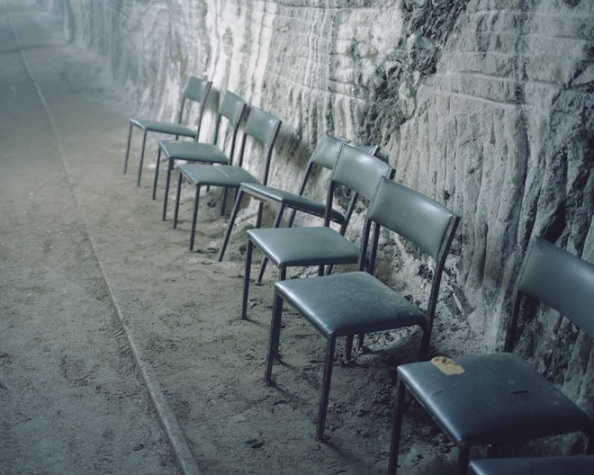
Image: Kirill Kuletski
At the repurposed salt mine in Solotvyno in the Ukraine, 3,000 to 5,000 patients are treated every year — a third of them children, which explains the large children’s room. During the Cold War, the patients consisted of mainly Ukrainians. Chief doctor Dr. Yaroslav Chonka says, “We were not allowed to promote this place, so for many years only a few people knew about us outside the USSR.” Now though, promotions are on and patients from throughout Europe put their names down for treatment. More often than not there is even a waiting list, so sought after is treatment here. The clinic is unique with tunnels that, 300 m (984 feet) below ground, are the deepest in the world. Thus, without artificial cooling or heating, temperatures remain at a steady 22°C (72°F) throughout the year. That’s not only quite amazing but also very comfortable! Confirms Dr. Chonka: “It’s easy to breathe and it’s pleasant to sleep here. Nothing disturbs you.” Chimes in 7-year-old Roxlana, here for treatment because of her asthma: “I’m not frightened about being here, why should I be? The mine is very interesting and very beautiful. It looks like somewhere that Father Christmas would live. And it makes me cough less.”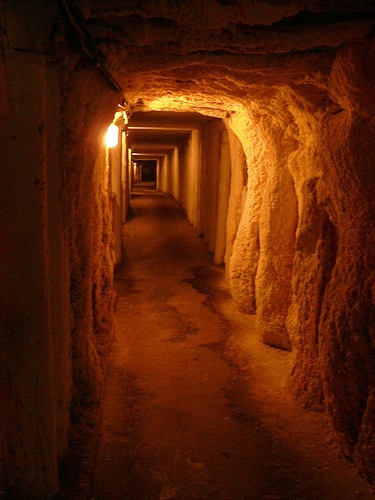
Image: Ximenatapia
At any given time, there are about 200 patients housed in the facility who stay 24 days on average for their treatment. For their afternoon or overnight sessions, they take a lift to the tunnels and all they have to do is breathe. Breathe in the clean, salty air that not only dissolves the phlegm in the patients’ bronchial tubes but also kills the micro-organisms that cause the infection. Brilliant, isn’t it? The patients pass their time underground by reading, sleeping and talking to each other. We can imagine that many a strong friendship must have formed under these quite extreme conditions. But no need to worry — most of the time, the patients sleep and eat their meals above ground.The clinic’s simple yet airy lunch room
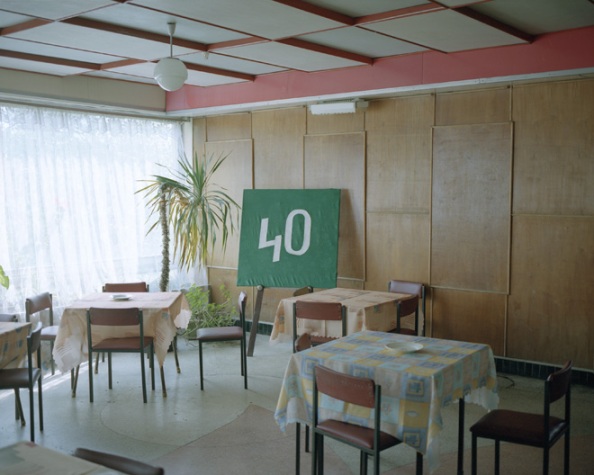
Image: Kirill Kuletski
Though the doctor’s office is crowded and the examination room (below) is simple and bare, both are functional and use whatever space is available: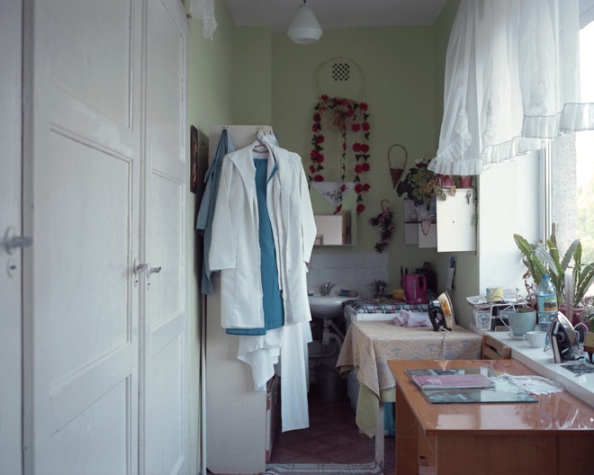
Image: Kirill Kuletski
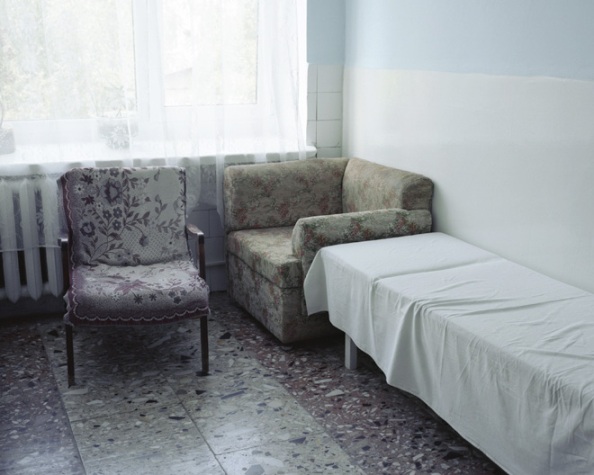
Image: Kirill Kuletski
For allergy and asthma sufferers without a salt mine close by, there’s always the option of taking a trip to the coast and seeing if their condition improves. The sanatoriums and clinics treating respiratory illnesses that dot the North Sea coastline in the Netherlands, Denmark and especially Germany are living proof that it helps. Luckily, in recent years, natural remedies have gone through a revival and even city slickers with asthma or allergies need not despair — there is a place like the Salt Cave even in a congested city like London. Here’s a video of the salty jewel of health:Getting back to the Ukrainian salt mine in Solotvyno, which is now converted into a sanatorium and was so masterfully captured on camera by Mr. Kuletski, the question is: “Would you rather suffer from asthma or allergies all your life or would you spend three weeks underground once in a while to cure yourself without side effects?” It’s your choice.
The therapy room at Solotvyno
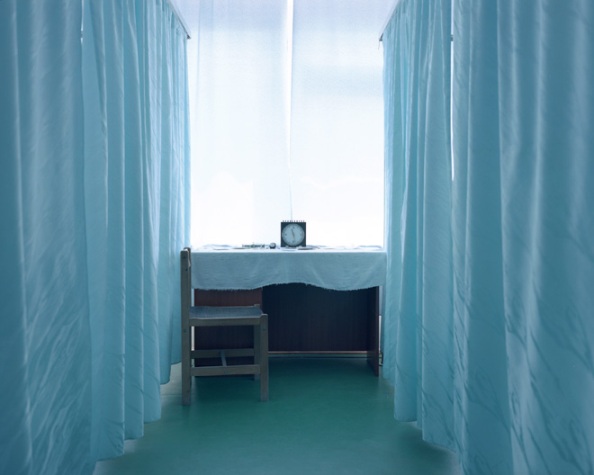
Image: Kirill Kuletski
We’re not sure what this medical device does, but it sure looks like a cross between a shower head and a hair brush. Maybe the mine suffers from invading porcupines and this is the only way to keep them at bay. OK, just a guess.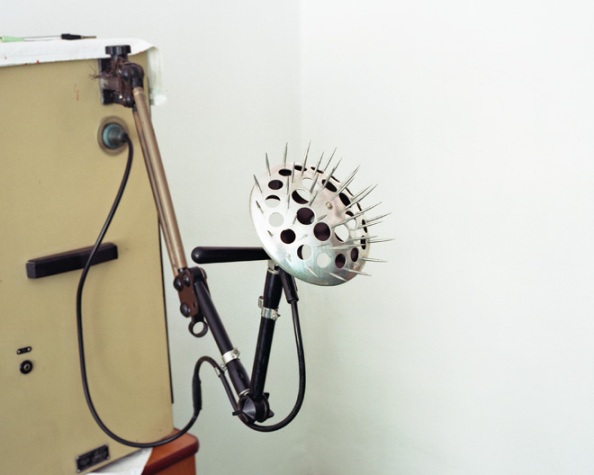
Image: Kirill Kuletski
Moscow-born Kuletski studied for two years at the Russian State Film University (now the Gerasimov Institute of Cinematography) in the early 1990s and then worked as a cameraman for various big Russian TV channels. In the mid-1990s, Kuletski moved to the U.K. to pursue a career as a Web and graphic designer. His passion has always been photography though, and in 2007, he had his first group exhibition. Many more shows and features have since followed for this talented photographer who currently lives and works in London.The key to health?

Image: Kirill Kuletski
Special thanks to Kirill Kuletski for granting us permission to use his images for this feature. For more about his ongoing photography projects, visit his website. Sources: 1, 2, 3, 4, 5